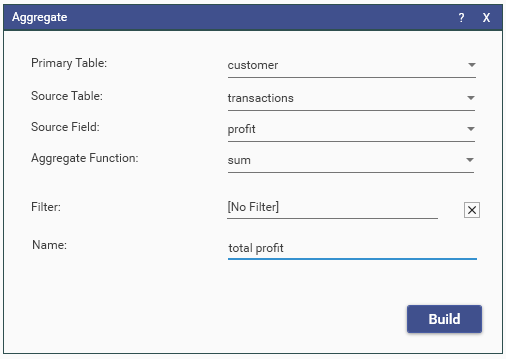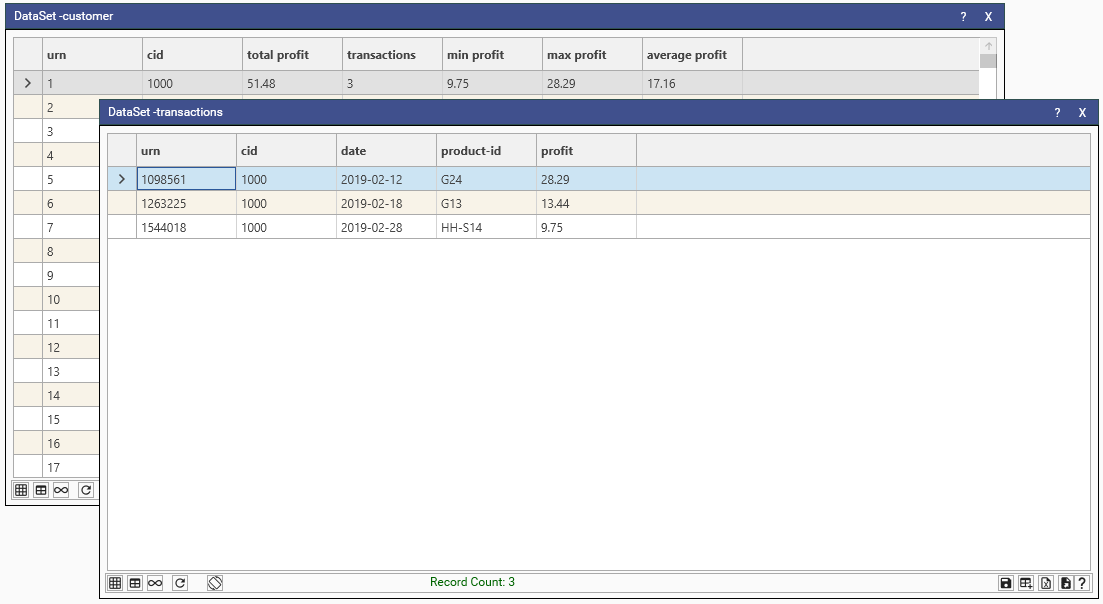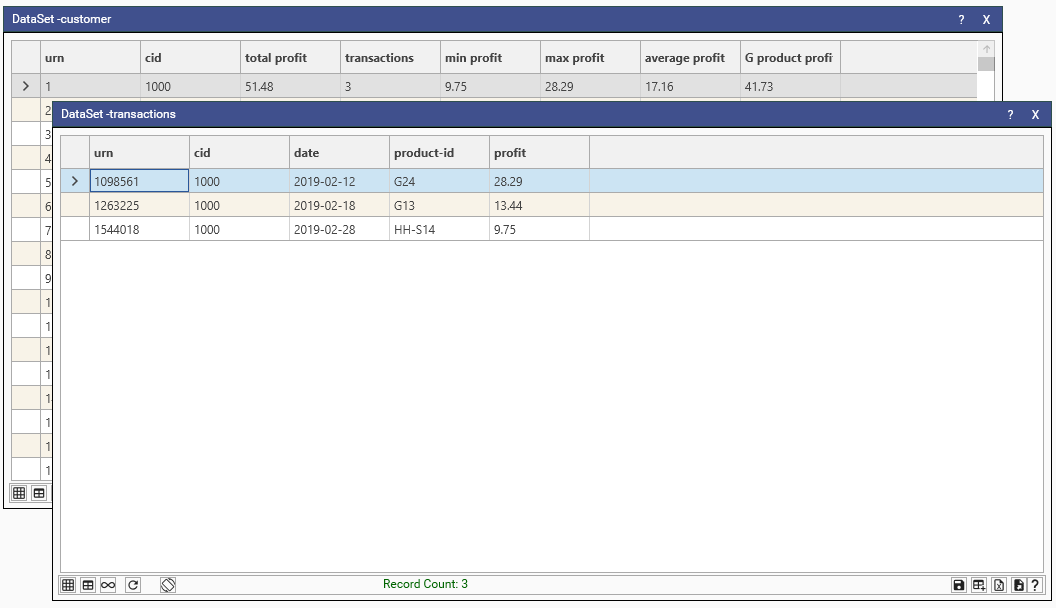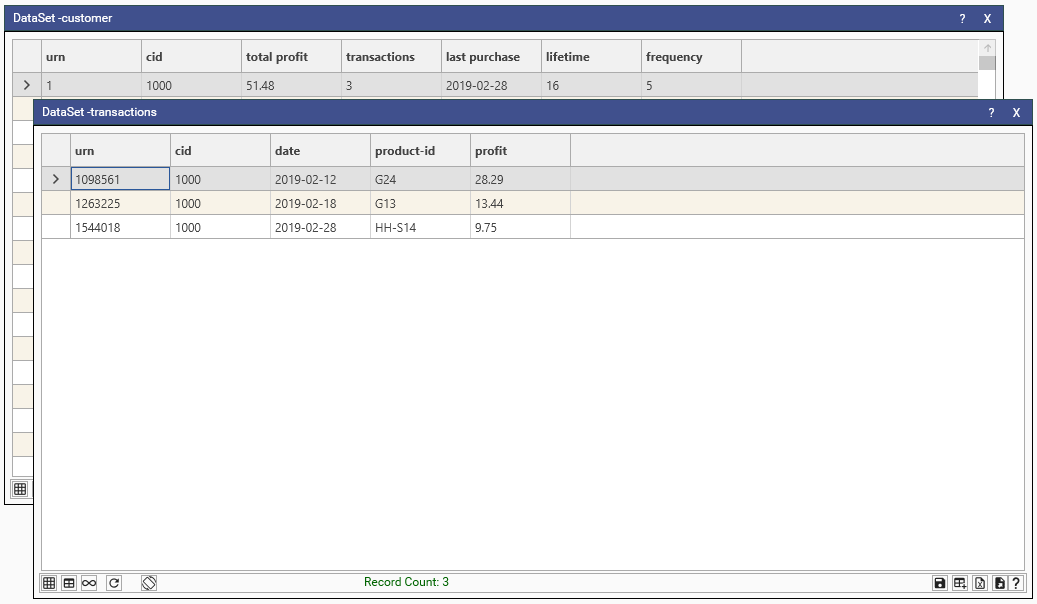Overview

Aggregating combines all records for each unique join-key on a foreign table in some manner, and creates that entity as a field on the primary side of the join.
Consider the relationship above, each customer may have multiple transactions on the transactions table.

Here, the customer with id 1000 has 3 transactions.
We can create a field on the customer table for total profit above with the definition above. This is a sum aggregation.
The JSON look like
{
"method": "BuildAggregate",
"project": "MyProject",
"targetTable": "customer",
"source": "transactions.profit",
"overwrite": true,
"name": "total profit",
"function": "sum"
}function can be count, min, max, avg or sum

The transactions table can be pre-filtered with a DataSet, only those transactions included in this DataSet will contribute to the calculation.
So setting a DataSet of product-id like "G*" for a sum aggregate called "G product profit"

{
"method": "BuildAggregate",
"targetTable": "customer",
"source": "transactions.profit",
"overwrite": true,
"name": "G product profit",
"function": "sum",
"project": "MyProject",
"dataSet": {
"logic": "or",
"name": "DataSet",
"strict": true,
"set": [
{
"logic": "and",
"stype": "FIELD",
"entity": {
"type": "field",
"name": "transactions.product-id",
"table": "transactions",
"valueFilter": []
},
"op": "like",
"values": [
"G*"
]
}
]
}
}Aggregates can be combined with other engineering functions to product other useful entities on the primary table.
For Example, if we create a "first purchase" and a "last purchase" field on the customer table, by performing a min and max aggregate on the transaction date
we can use an Expression Field "[last purchase]-[first purchase]" to produce a lifetime in days.
This could be divided by the number of transactions (count aggregate) to produce a "frequency of purchase" field.
